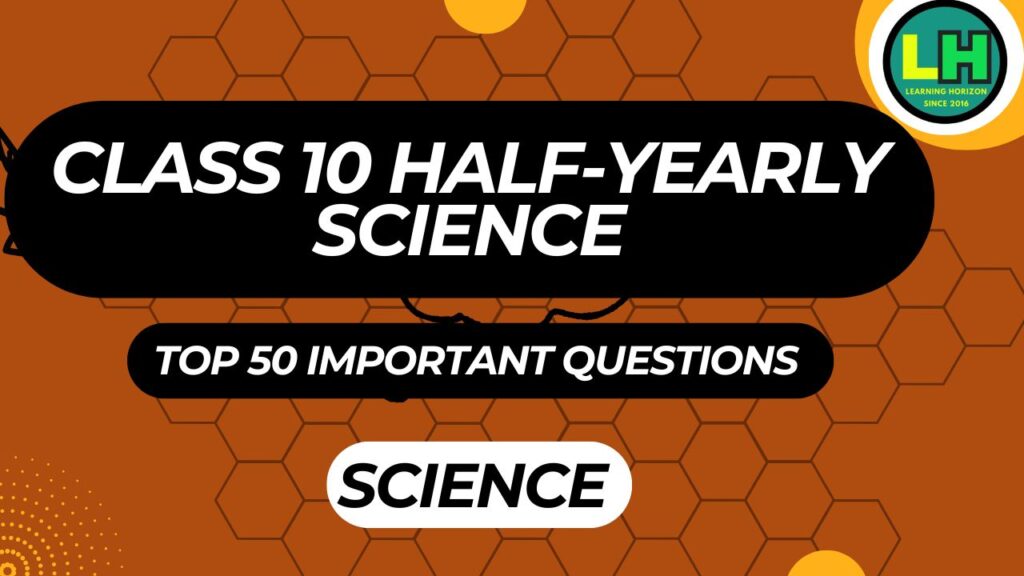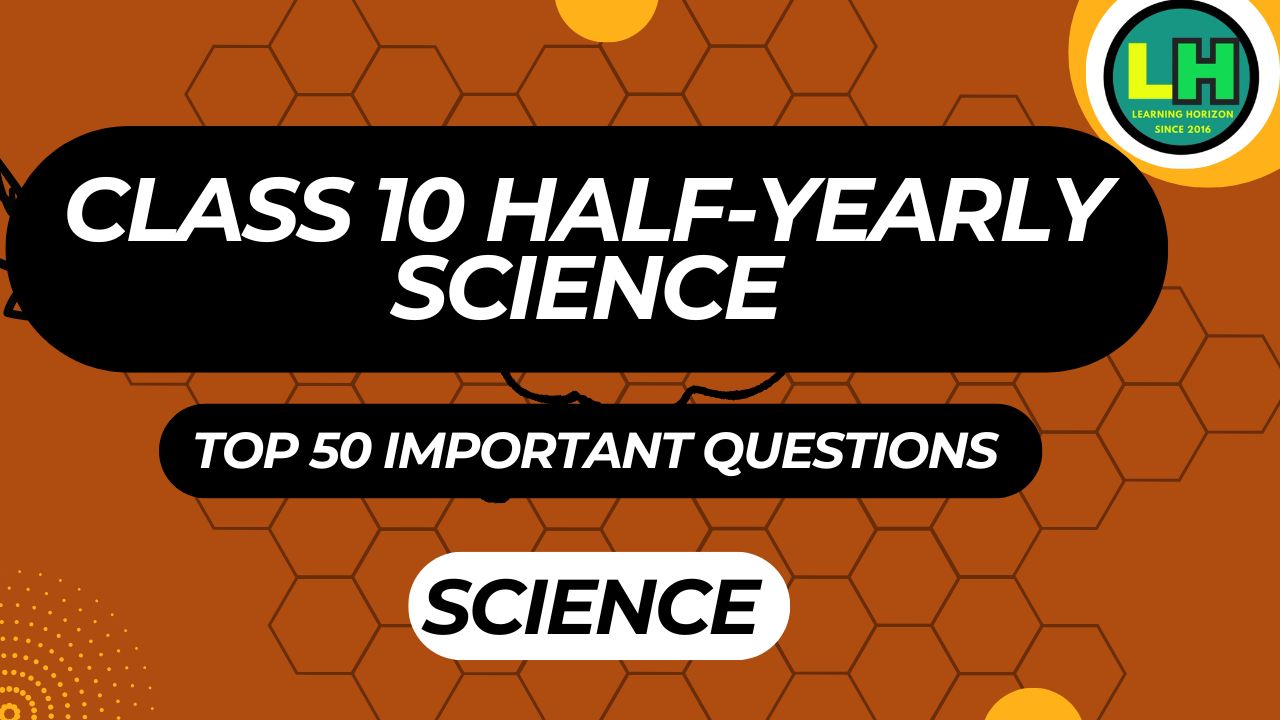Table of Contents

Half-Yearly science Top 50 Questions class 10
Physics
Chapter 10: Light – Reflection & Refraction
- State the laws of reflection of light.
- Draw a ray diagram for the formation of image by a concave mirror when the object is placed between F and C.
- Define the principal focus of a concave mirror.
- An object is placed 20 cm from a concave mirror of focal length 15 cm. Find the position and nature of the image.
- Why is the refractive index of glass with respect to air greater than one?
Chapter 11: Human Eye & Colourful World
- Name the part of the eye where the image is formed.
- What is the function of the iris in the human eye?
- Why do stars twinkle but not planets?
- Explain the phenomenon of dispersion of white light by a glass prism with a diagram.
- What is the near point and far point of a normal human eye?
Half-Yearly science Top 50 Questions class 10
Chemistry

Chapter 1: Chemical Reactions & Equations
- Write the balanced equation for the reaction of zinc with dilute sulphuric acid.
- State two differences between a physical and a chemical change.
- What is a displacement reaction? Give one example.
- Write the chemical equation for the reaction of calcium hydroxide with carbon dioxide.
- Define oxidation and reduction with examples.
Chapter 2: Acids, Bases & Salts
- Why does dry HCl gas not change the colour of dry litmus paper?
- Write the reaction of sodium hydroxide with zinc.
- What is a neutralization reaction? Give an example.
- Why is baking soda used in making bread or cakes?
- Name the salt obtained when hydrochloric acid reacts with sodium hydroxide.
Chapter 3: Metals & Non-Metals
- Name a metal which is both ductile and malleable.
- Write the chemical equation of reaction of aluminium with steam.
- Why are metals good conductors of electricity?
- Give reasons: Sodium and potassium are stored under kerosene.
- What is an alloy? Give two examples.
Half-Yearly science Top 50 Questions class 10
Chapter 4: Carbon & its Compounds
Biology

Chapter 6: Life Processes
- Name the raw materials required for photosynthesis.
- Write the equation for photosynthesis.
- Differentiate between autotrophic and heterotrophic nutrition.
- Name the enzyme present in saliva. What is its function?
- Explain the process of respiration in plants.
Chapter 7: Control & Coordination
- Name the plant hormones responsible for (i) cell division (ii) growth of stem.
- How does our body respond when we touch a hot object accidentally?
- Differentiate between reflex action and voluntary action.
- Name the unit of nervous system.
- What is phototropism? Give an example.
Chapter 8: How do Organisms Reproduce?
- What is binary fission? Give one example.
- What is vegetative propagation? Give two examples.
- Name the reproductive organ in human males that produces sperms.
- Write two advantages of sexual reproduction over asexual reproduction.
- Why is DNA copying important in reproduction?
Chapter 9: Heredity & Evolution
- Define variation in terms of genetics.
- What is a dominant trait? Give one example.
- Name the scientist who gave the laws of inheritance.
- How does sex determination occur in humans?
- “Acquired traits cannot be inherited.” Explain with an example.
Half-Yearly science Top 50 Questions class 10
Read also : Science class 10 activities
